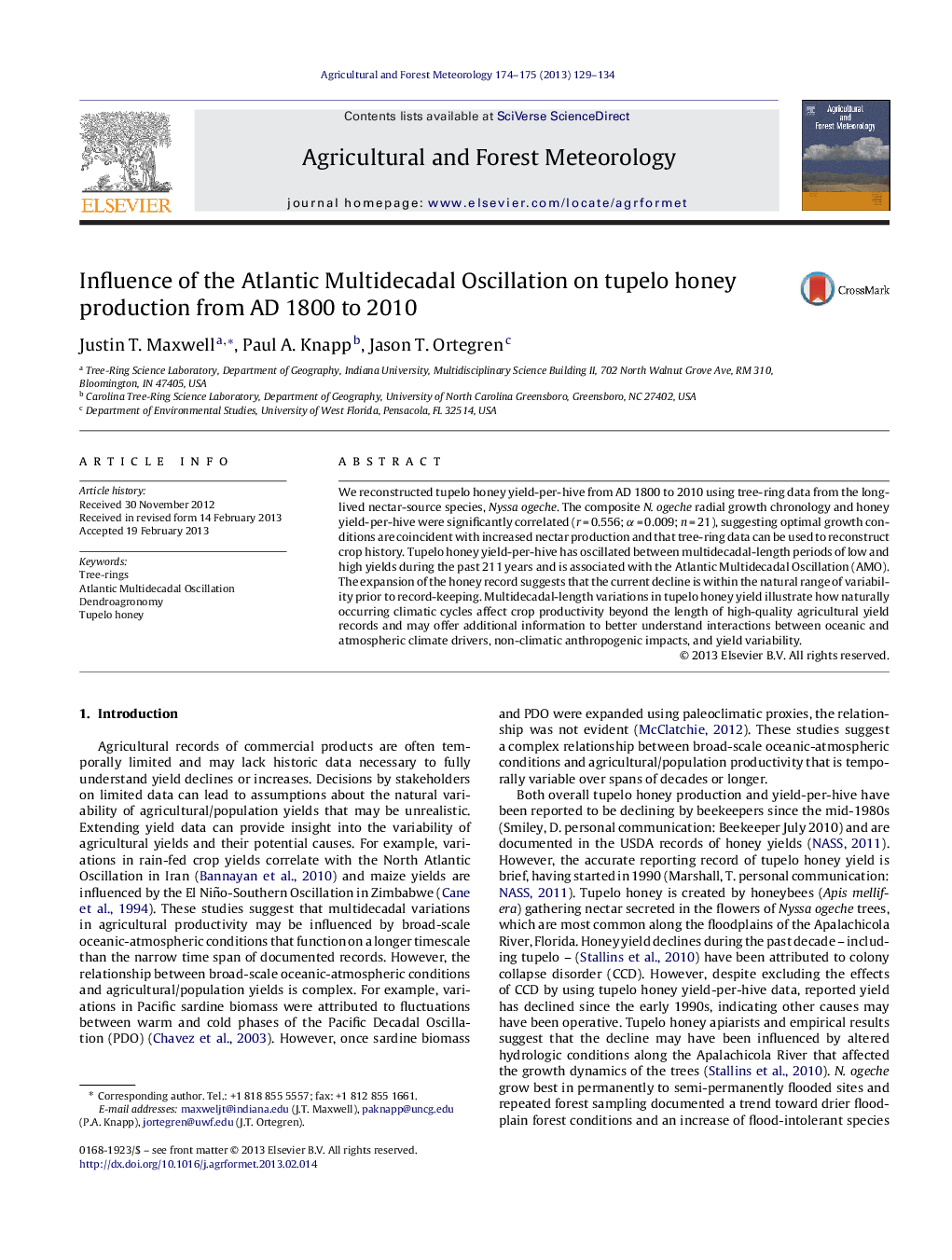| Article ID | Journal | Published Year | Pages | File Type |
|---|---|---|---|---|
| 81781 | Agricultural and Forest Meteorology | 2013 | 6 Pages |
We reconstructed tupelo honey yield-per-hive from AD 1800 to 2010 using tree-ring data from the long-lived nectar-source species, Nyssa ogeche. The composite N. ogeche radial growth chronology and honey yield-per-hive were significantly correlated (r = 0.556; α = 0.009; n = 21), suggesting optimal growth conditions are coincident with increased nectar production and that tree-ring data can be used to reconstruct crop history. Tupelo honey yield-per-hive has oscillated between multidecadal-length periods of low and high yields during the past 211 years and is associated with the Atlantic Multidecadal Oscillation (AMO). The expansion of the honey record suggests that the current decline is within the natural range of variability prior to record-keeping. Multidecadal-length variations in tupelo honey yield illustrate how naturally occurring climatic cycles affect crop productivity beyond the length of high-quality agricultural yield records and may offer additional information to better understand interactions between oceanic and atmospheric climate drivers, non-climatic anthropogenic impacts, and yield variability.
► We successfully reconstructed tupelo-honey yield from 1800 to 2010. ► Tupelo honey yield is related to the Atlantic Multidecadal Oscillation. ► The current decline in honey yield is not outside the natural range of variability. ► Expanding yield records revealed influence by multidecadal climate oscillations.
